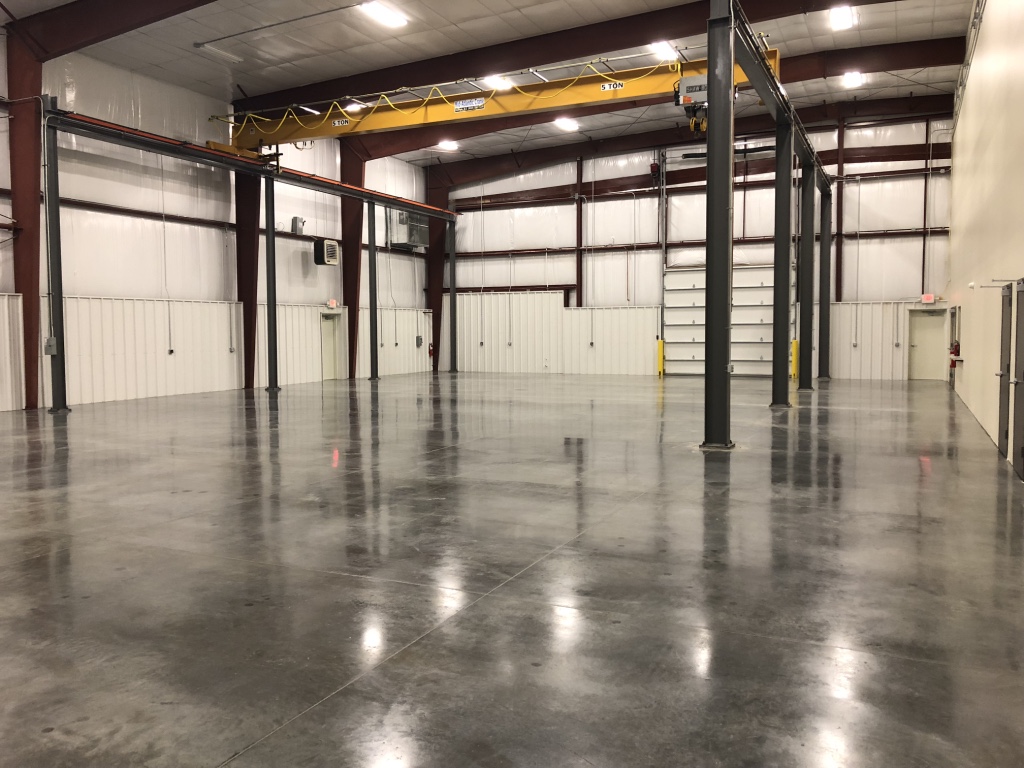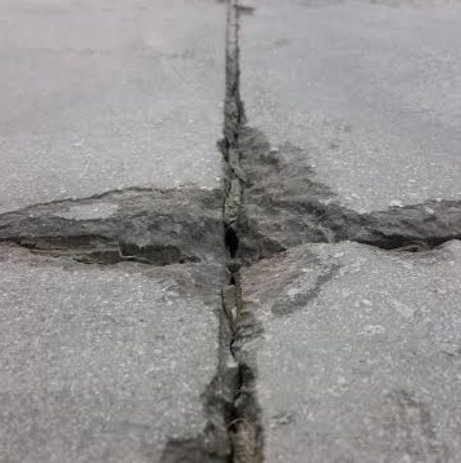Concrete densifiers are widely being used to increase concrete surface hardness, prevent dusting and improve wear resistance. Filling control joints and densifying the concrete is becoming extremely popular in warehouse, manufacturing, and industrial facilities, greatly prolonging the life of the slab at a minimal cost.
Despite being so hard, concrete is extremely porous. These small voids make the concrete susceptible to staining, cracking, dusting, efflorescence, hydrostatic pressure and a host of other problems. Once concrete starts to degrade, especially in high-traffic areas, it is difficult and costly to repair. Most operating facilities simply cannot afford the down time associated with removing and replacing concrete.
One of the best, and most economical, ways to prevent this is with the use of a floor hardener (aka chemical hardener). Most densifiers are silicate based and make use of either a sodium, potassium or lithium carrier. Lithium densifiers represent the newest and most popular form of chemical hardeners. Sodium and potassium densifiers need to be removed before they crystallize on the surface producing residues that are difficult to remove. Lithium densifiers typically need to only be lightly applied on the surface while sodium and potassium densifiers need to saturate the floor for an extended period of time (typically 45 minutes).
Sodium, potassium and lithium silicates all react with calcium hydroxide (a byproduct of cement hydration) to produce calcium silicate hydrate (C-S-H), the same binder that results when water is added to cement. This is what gives concrete much of its strength and hardness. In the hydration process, calcium hydroxide dissolved in water moves to the surface region of a slab where the silicates can react with it. This newly created C-S-H is deposited primarily in the pores and canals on the surface of a slab. When a chemical densifier is applied, additional C-S-H is formed which helps to fill in the void space, strengthening and hardening the concrete.
In years past, acrylic cure and sealers applied to fresh concrete (often by the concrete placement contractor) was the norm for large high-traffic warehouse and industrial facilities. These cure and sealers, however, can show wear patterns over time as well as trap moisture, creating a whitish haze. With a chemical densifier, a non-membrane barrier is formed which won’t discolor or peel. Densifiers also help to resist tire marks and aid in stain prevention. Furthermore, with regular auto scrubbing and daily use, a chemically densified floor actually self-polishes to an extent with gloss improving over time.
Most manufacturers have their own proprietary blends which may require different application and removal practices. Several of the most common industrial and warehouse densifiers (Ashford Formula and Euco Diamond Hard) require keeping the surface saturated and agitated for 30-45 minutes while the chemical reactions occur. This can be difficult to do on sections that cover tens of thousands of square feet. This is where large ride-on auto scrubbers play a key role. An auto scrubber is able to apply water to the surface, scrub the water into the surface and then vacuum up the dirty water in one pass. The scrub brushes also allow us to keep the densifier agitated in order not to dry. Once the specified reaction time has expired, the autoscrubber can be used to remove the densifier residue and clean the concrete.
Benefits of Densifiers for Concrete:
- Increased compressive strength
- Added abrasion and stain resistance
- Increased liquid repellency
- Helps to eliminate efflorescence and dusting
- Gloss improvement over time increases reflectivity which can aid in energy savings


One of the most common problems we come across in warehouse and distribution facilities is damaged concrete around control joints resulting from hard-wheeled forklift traffic. When the control joint is not filled, the hard-wheeled traffic cannot make a smooth transition across the control joint. Over time, this will cause the concrete to break off in chunks, rendering the pathway unusable. A very simple solution is to install a joint filler. ACC prefers making use of dual component, semi-rigid polyurea joint fillers. Semi-rigid polyureas have some level of flexibility to allow for expansion and contraction of the slab while maintaining a similiar shore hardness as the concrete. Also, they set-up extremely quickly. A pump fitted with two (2) 5-gal tanks (one for the A component and one for the B component of the polyurea) and a mixing wand is used to inject the material into the control joint. Typically, the material is cured enough to be shaved clean within 5 minutes. Inevitably, in some areas the joint fill material will separate from the joint wall as the slab settles and shifts over time. These areas can simply be cut out, refilled and shaved smooth. It is best practice to run a joint saw along each sidewall prior to filling to clean and profile the joint wall for better adhesion of the fill material.
Chemical densification and joint filling have proven to be a great way to prolong the life of the slab while improving its appearance. As is often the case in the flooring industry, the larger the area the lower the unit cost. Due to many of these facilities being so large, it is not uncommon for chemical densification with joint filling to cost well under $1/sf. When compared to repair and replacement costs, not to mention the costs associated with down time, these preventative services will truly pay for themselves in no time.